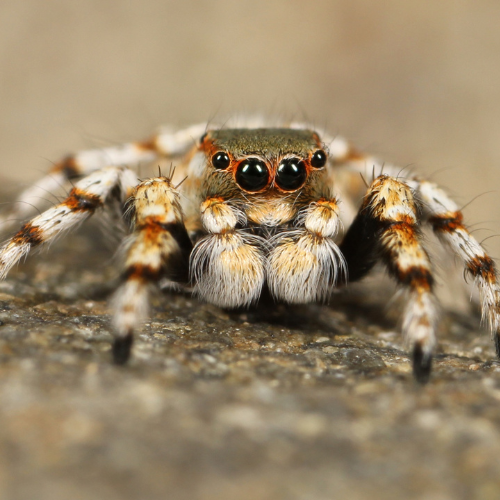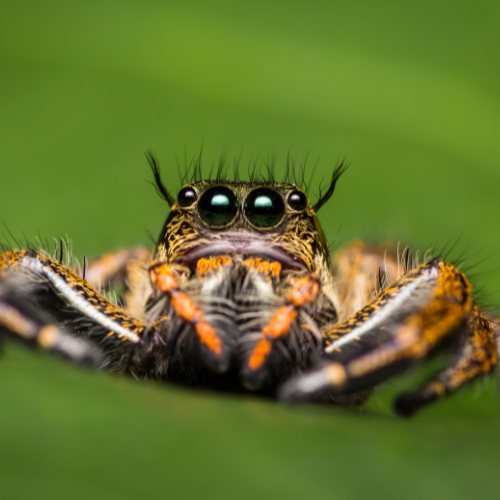Jumping Spider
Introduction to
Jumping spiders are a fascinating and diverse group of arachnids known for their impressive jumping abilities and vivid coloration. Unlike many other spiders, they rely on their keen eyesight and agility to hunt prey rather than building webs. These spiders are generally harmless to humans and can even be beneficial by controlling pest populations. This article explores the recognition, biology, habits, prevention, and professional handling of jumping spiders, providing a comprehensive guide to understanding and managing these intriguing creatures.
Recognition
Jumping spiders are easily recognizable due to their distinctive physical characteristics. They are typically small, ranging from 4 to 20 millimeters in length. Their bodies are compact, with relatively short legs compared to other spiders, and they often display bright, vivid colors or intricate patterns. One of the most notable features of jumping spiders is their large, forward-facing eyes, which provide excellent vision and contribute to their hunting prowess. These spiders are often seen actively moving during the day, exhibiting their characteristic jumping behavior as they hunt for prey or explore their surroundings.
Biology
Jumping spiders belong to the family Salticidae, which includes over 6,000 species worldwide. They are diurnal hunters, relying on their acute vision to spot and stalk prey. Unlike web-building spiders, jumping spiders use a combination of stealth and agility to capture insects and other small arthropods. They have a unique courtship behavior, where males perform elaborate dances to attract females. After mating, females lay eggs in silken sacs, which they often guard until the spiderlings hatch. Jumping spiders have a relatively short lifespan, typically living for one to two years.
Habits
Jumping spiders are solitary creatures, usually found on plants, walls, and other surfaces where they hunt for food. They are highly active during the day and use their superior vision to navigate and detect prey. These spiders can leap several times their body length to capture prey or escape threats, thanks to their powerful hind legs. Jumping spiders do not build webs to catch food, but they do use silk to create draglines for stability when jumping and to construct shelters. They are curious and often exhibit seemingly inquisitive behavior when approached.
Prevention
Preventing jumping spider infestations involves keeping indoor and outdoor areas clean and free of other insects, which serve as their primary food source. Seal cracks and crevices around windows, doors, and foundations to prevent spiders from entering your home. Use screens on windows and doors to allow ventilation while keeping spiders out. Regularly clean and declutter areas where spiders are likely to hide, such as basements, attics, and storage spaces. Reducing outdoor lighting can also help, as lights attract insects that, in turn, attract spiders. Maintaining a clean and insect-free environment is key to preventing jumping spiders from taking up residence in your home.
Professional
If jumping spiders become a persistent problem, professional pest control services can provide effective solutions. STL Pest Control offers comprehensive management plans to address jumping spider infestations. Their experienced technicians will conduct thorough inspections to identify entry points and areas of spider activity. They apply targeted treatments to eliminate spiders and their prey while offering preventive measures to keep spiders from returning. Professional pest control services ensure a thorough and lasting solution to spider infestations, maintaining a safe and comfortable living environment.



Our Office









